Slice of life manga come in many shapes and sizes. Some focus on romance, others comedy. Some take simple situations and twist them into bizarre shapes. Others are queer coming-of-age stories.
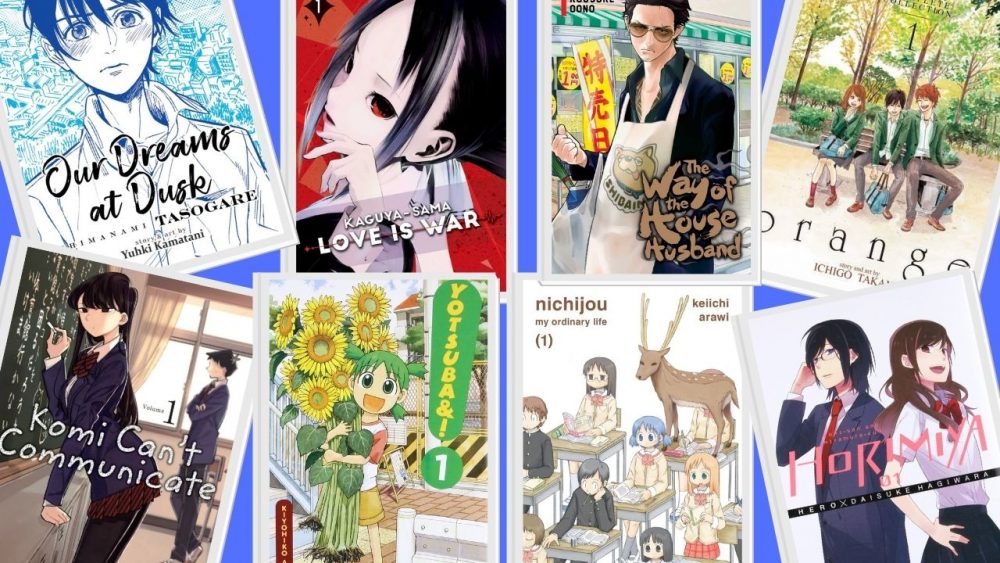
Essential Slice of Life Manga
Whatever your personal flavour when it comes to slice of life manga, you’ll find something to sink your teeth into here. Many of these manga — whether they be comedy, romance, or something else entirely — will likely send you down a rabbit hole as you discover your own favourite slice of life manga. Enjoy what you find here and beyond! You’ll surely laugh and cry, sometimes all at once.
Read More: The Best Light Novels to Read Right Now
Kaguya-sama: Love is War by Aka Akasaka
Translated by Emi Louie-Nishikawa

Kaguya-sama stretches itself neatly across the comedy, romance, and slice of life manga genres. Most prominently, it’s a comedy about two young geniuses locked in a battle of wits as they each avoid admitting their feelings to the other, while simultaneously attempting to trick the other into admitting their own feelings. Love, as the subtitle says, is war.
As Kaguya-sama escalates, however, the romance peeks through the clouds of comedy. We see more and more moments of genuine adoration. We see Kaguya and her rival Shirogane blush and act sheepish as they come close to letting their guards down and being genuine.
This slice of life manga is, at times, laugh-out-loud hilarious, but it keeps you pushing forward with its moments of honesty and earnestness. Its situations are relatable, even if our protagonists — being elite-level smart and, in Kaguya’s case, rich — are less so.
There is also an anime adaptation of Kaguya-sama: Love is War, which uses top-tier voice acting, some gorgeous animation, and a stellar OP to make for a perfect adaptation. The manga, however, makes better use of the narrator’s voice and Aka Akasaka’s depiction of his characters’ facial expressions comes out on top in the original, making for one of the best comedy and slice of life manga around.
Komi Can’t Communicate by Tomohito Oda
Translated by John Werry
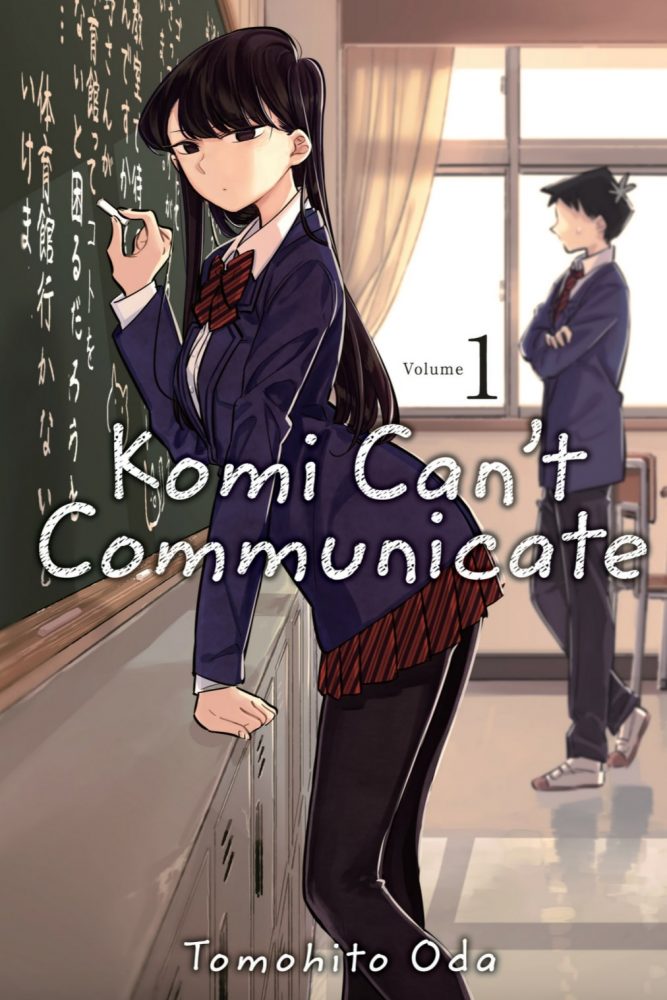
Tomohito Oda’s Komi Can’t Communicate (Komi-san wa Komyushou Desu) is a comedy slice of life manga, propelled forward by a sweet premise that remains interesting throughout, but with some comedy moments that only sometimes land.
The titular Komi is a high school girl who is popular almost by default. She is immaculate, beautiful, and refined; she never speaks to anyone, and she reduces anyone who looks her way to a puddle with her piercing stare. The way that Komi presents herself (not by choice, as we soon learn) leaves her beautiful and unapproachable, thus leaving her with this goddess-like aura; anyone who strays her way is unworthy of her attention.
Komi is a student at Itan Private High School, where Hitohito Tadano has just enrolled with the personal mission of being ordinary and simply fitting in. Like everyone else, Tadano is struck by Komi’s beauty and left paralysed by the looks she gives him.
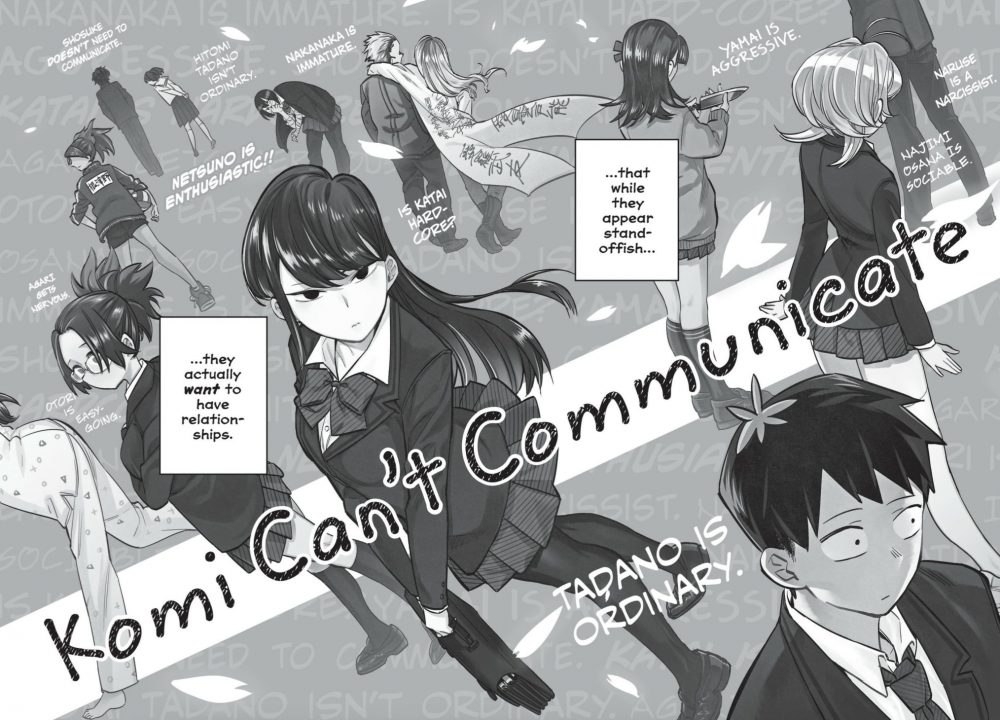
Unlike everyone else in their class, however, Tadano quickly figures out that Komi’s terrifying veneer of coldness is all a misunderstanding, one that she can’t put right because, as the title makes clear, Komi can’t communicate. The setup and story of this slice of life manga is a really solid one. It gives us a charming pair of characters to begin our story: a girl and a boy with no romantic chemistry who have a sort of quest to undertake together.
It also gives us a very relatable theme for younger readers to latch onto. Communication issues, loneliness, and misunderstanding are all very common stresses amongst teenagers, and many will surely find a friend in Komi.
Nichijou by Keiichi Arawi
Translated by Jennifer McKeon
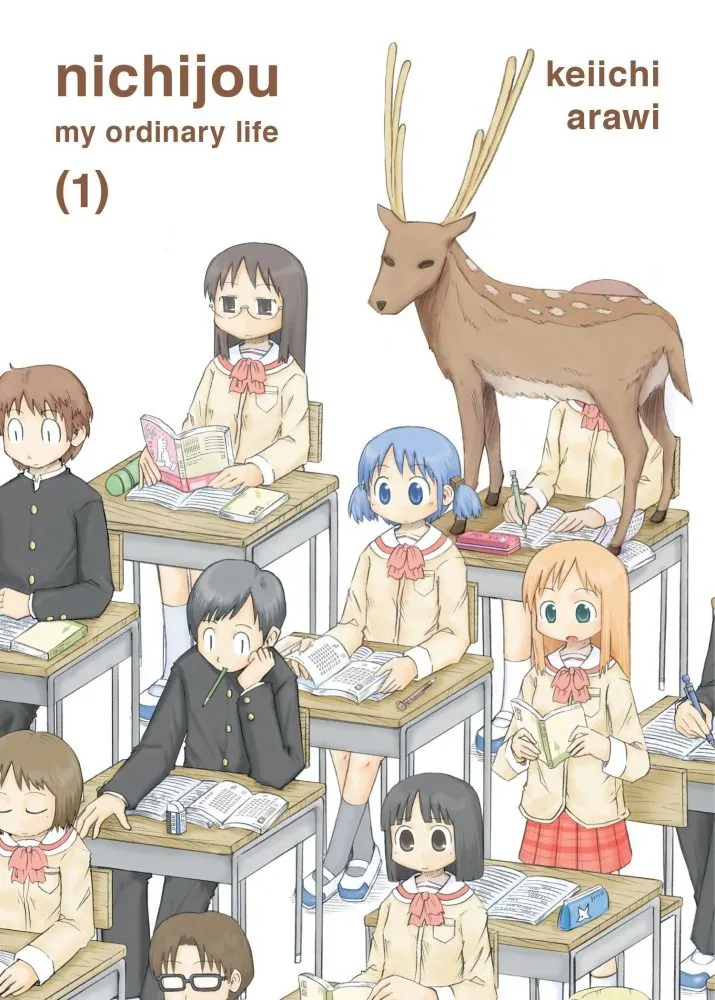
Nichijou is a slice of life manga masterpiece that takes the very concept of “slice-of-life” and plays with it in a very meta, constantly hilarious way. Set in the town of Tokisadame, Nichijou (Everyday) centres around two main groups of characters: a group of three young schoolgirls and an odd trio made up of a child professor, her hand-built robot, and a talking cat.
Despite the second trio’s strangeness being seen from a mile away, the three schoolgirls of this slice of life manga are just as eccentric. One is deadpan serious, the second is cheerful to a fault, and the third is wildly emotive.
Each chapter of Nichijou sets up a fairly ordinary scenario — one that is relatable or, at least, understandable and reasonable — but that scenario quickly morphs and deteriorates into absurdity. Almost without fail, the events of each chapter will have your guts in knots.
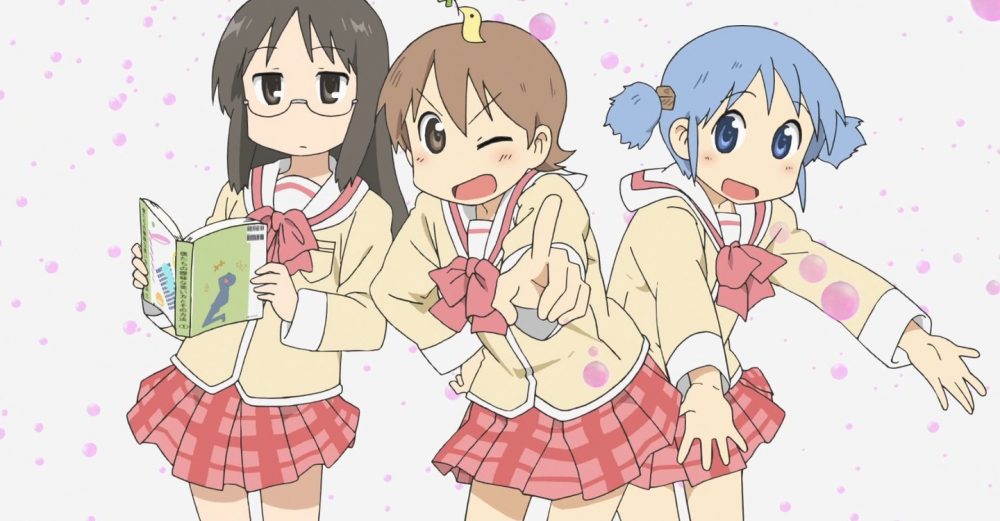
The comedy of Nichijou is truly outstanding. Shocking, unexpected, blending slapstick with absurdism, these comedy scenes are loud and unabashed at one moment; quiet and subtle in the next.
Nichijou is all about taking daily occurrences, struggles, and battles (ones which we all handle with politeness and camouflaged frustration) and tackling them with bombast and hilarity. In that way, Nichijou is wonderfully cathartic and a winning slice of life manga.
Way of the Househusband (Gokushufudou) by Kousuke Oono
Translated by Sheldon Drzka and Amanda Haley
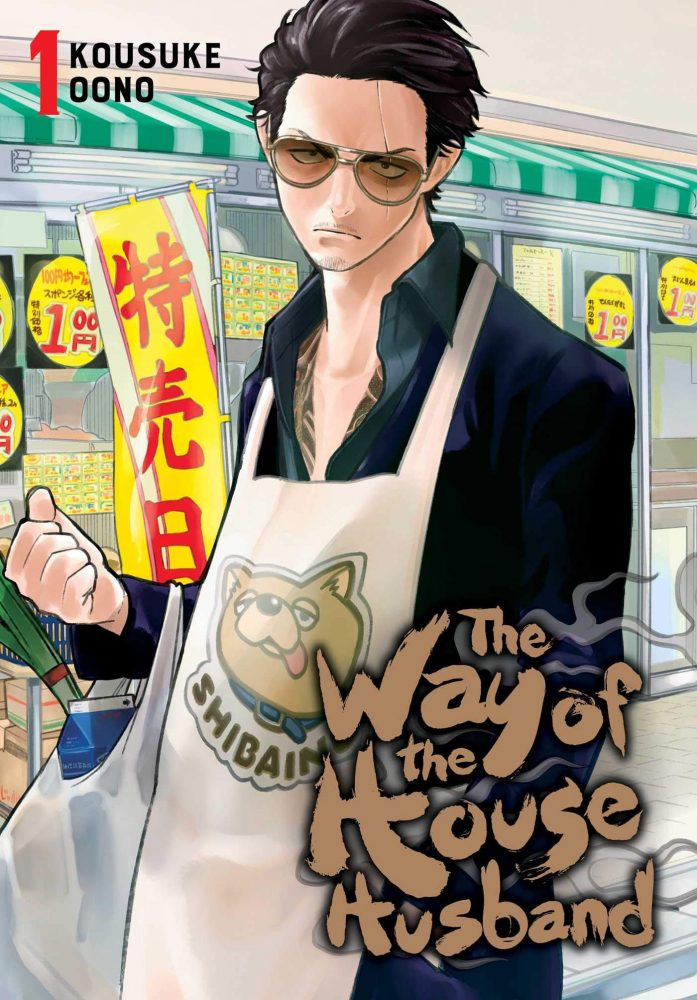
While you can find a live-action and a Netflix animated adaptation of Gokushufudo, it’s Kousuke Oono’s original manga that’ll really have you gripping your hips with laughter time and again. Gokushufudo: Way of the Househusband is a slice of life manga with a simple premise: a once fearsome and terrifying yakuza boss is now living the life of a househusband.
Our former yakuza boss is Tatsu. While he was once known as The Immortal Dragon, Tatsu is now a dedicated househusband, eager to support his career-woman wife Miku.
Like Kaguya-sama and Nichijou, Gokushufudo is an episodic comedy slice of life manga. The comedy here derives from the brilliant and absurd juxtapositions created by Tatsu’s situation: that of a crime boss living the simple and soft life of a househusband.
It’s remarkable and always unexpected, the ways in which Oono continues to keep this manga’s comedy fresh, given its simple premise. The fact that he does is consistent proof of the comedy genius at work here.
Skip and Loafer by Misaki Takamatsu
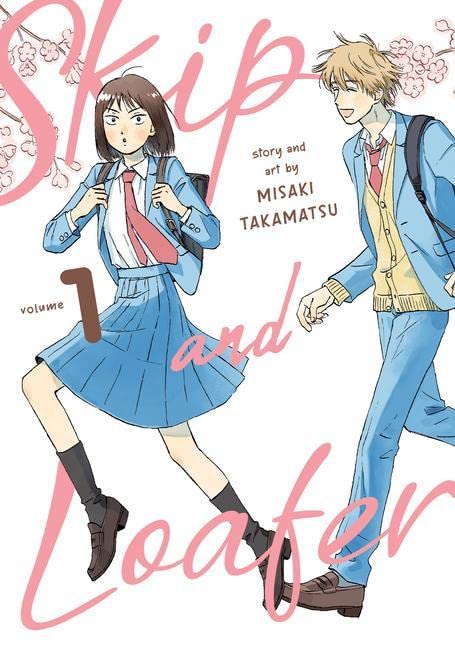
Skip and Loafer has charm coming out of every pore. There is a wide-eyed sweetness, as well as a goofiness, to our protagonist, which is emphasised by her unique appearance. Iwakura is drawn differently from the other characters on the roster, with her expression being more minimalist and blank, reminiscent of Mob Psycho 100.
The fact that even her face elicits a laugh (but not in a cruel or mocking way) is charming. Then there is the focus on friendship over romance. Our other protagonist, Shima, is a delightful himbo that every girl crushes on, and he has chosen to befriend Iwakura on her first day at school.
In fact, it’s her first day in Tokyo, having grown up in the sticks. A lot goes wrong, and Shima is there to lend a hand (although he’s not great at doing so). This is a slice-of-life manga that blends the shoujo and romance genres into something hilarious, warming, and entertaining. The stellar English translation carries that comedy and charm across every line and page, and a consistently growing cast of characters keeps us engaged chapter after chapter.
A Girl on the Shore by Inio Asano
Translated by Jocelyne Allen

Inio Asano is a mangaka best known for being one of the manga world’s smartest and boldest creators. His series Goodnight Punpun is an oft-touted masterpiece that taps into the tragedy of growing up lost and frightened.
But if you want a self-contained example of the genius of Inio Asano, and of slice of life manga done so harrowing, might I suggest the raw, erotic, desperately sorrowful A Girl on the Shore (Umibe no Onnanoko). A Girl on the Shore follows the rocky, immature, sexually charged relationship of two Japanese middle-schoolers living in a sad, ugly nowhere town.
Our protagonists of this slice of life manga are Koume and Isobe, neither yet sixteen years of age but both already chewing their nails in sexual anticipation. Koume has briefly involved herself with the local cool guy, who quickly used her for fun and games.
Meanwhile, Isobe is explicitly written as a lonely, isolated, awkward otaku loser; an incel in the making. Though also far from it given the nature of his and Koume’s relationship. Every other character exists as a thing against which our protagonists can react, which they often do. They antagonise, threaten, manipulate, and even brawl with our protagonists.
Their story begins with Isobe having admitted his feelings for Koume, and her brushing him off while still being comfortable enough to sleep with him.
At the beginning, their relationship is defined by their sex, which is depicted with graphic intensity through Asano’s art. Which makes this a good point to mention that, despite our characters being teenagers, this slice of life manga is not suitable for young readers.
Young readers of YA fiction should look elsewhere. A Girl on the Shore is brutal and graphic. That goes for its characters’ thoughts and actions, as well as its depictions of sexual encounters.
Read More: Essential Adult Manga for Mature Readers
Horimiya by Daisuke Hagiwara
Translated by Taylor Engel

Horimiya (full title: Hori-san to Miyamura-kun) is a romance slice of life manga series that was originally both written and drawn by mangaka Hiroki Adachi (using the pen name Hero). The manga became known as Horimiya when it was adapted by artist Daisuke Hagiwara (kind of a One Punch Man situation). As this version of the Horimiya manga wrapped up, the anime adaptation began airing and gaining a whole new fanbase.
Horimiya is a refreshing teen romance story that centres on the titular Kyoko Hori and Izumi Miyamura, two high school classmates who quickly fall in love.
Hori-san is a popular honour student with a hidden home life: she raises her little brother and manages the home because her parents are “busy”. Miyamura-kun plays the introverted and lonely otaku at school but is, in actual fact, a sexy, tattooed, and pierced himbo.
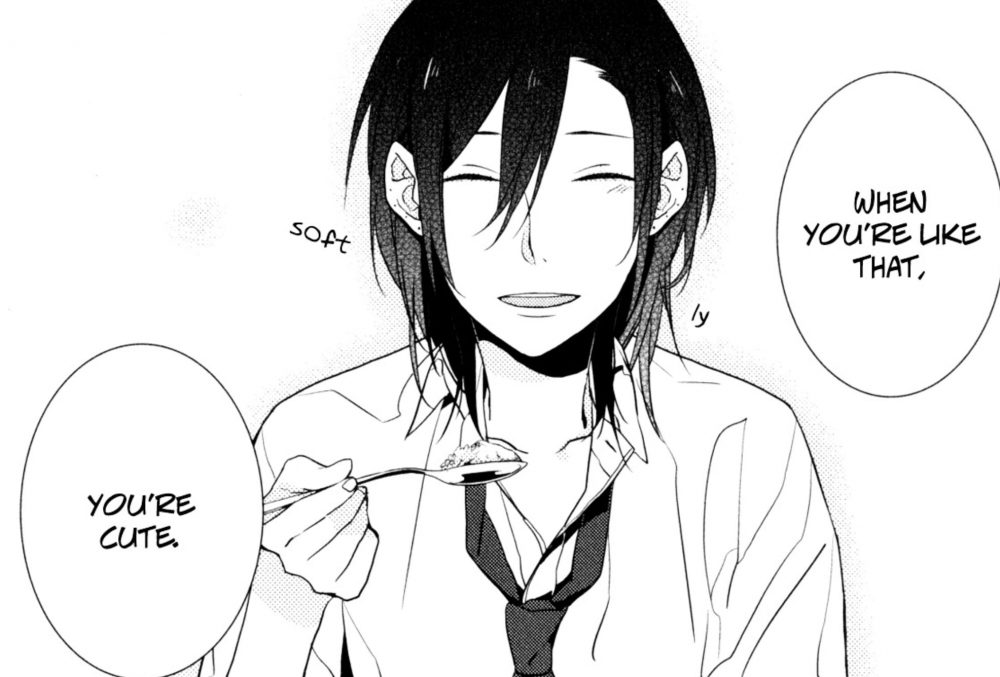
The story moves at an impressive click, with the surface-level readings of these characters thrown in our faces in chapter one, before being immediately stripped away, revealing the more complex lives and personalities of these two love interests.
Until the story’s beginning, Hori and Miyamura have never spoken. He keeps a low profile by design and her heavy responsibilities keep her from noticing other people. It’s their secrets, which are quickly exposed to the other, which form a bond between them.
Miyamura begins to spend every evening after school at Hori’s home. He brings cake from his family’s bakery and he helps her raise her adorable little brother. The two confide in one another, letting their guards down and letting the other one see their true colours.
Yotsuba to! by Kiyohiko Azuma
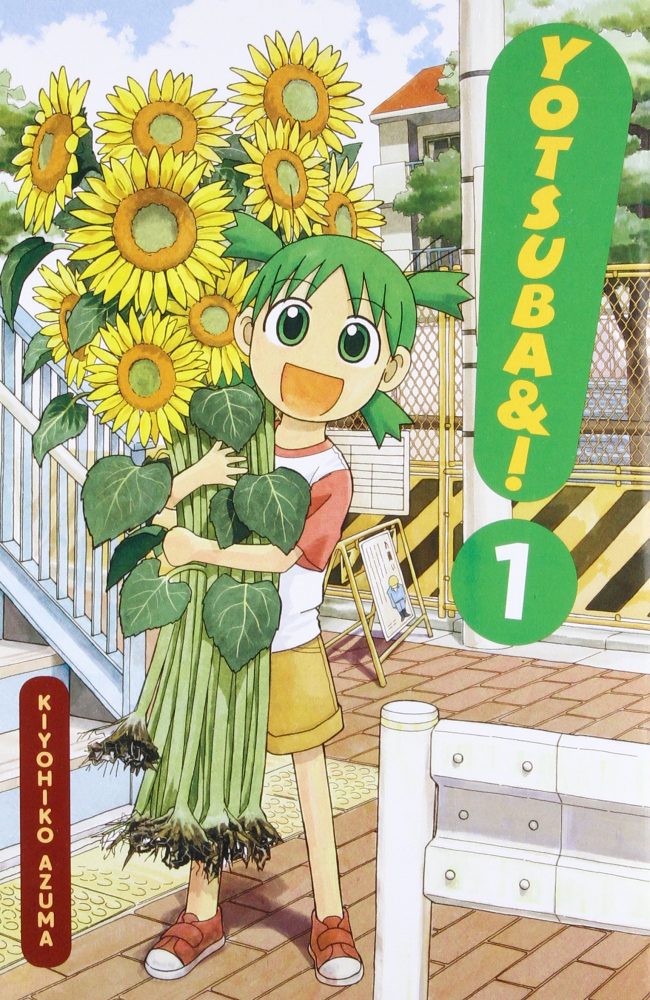
Stylised as Yotsuba&! in its English translation, Yotsuba to! is a charming and upbeat slice of life manga that follows the everyday living of a young girl, the titular Yotsuba.
While there is a supporting cast of characters, the focus of this slice of life manga is on Yotsuba herself, and the chapters are very much unchronological. You can dip in and out of what will become your favourite chapters, enjoy a few happy stories, and then move on.
Yotsuba herself is only five years old, but it’s her personality that is the heart and soul of this slice of life manga. Yotsuba is confident, expressive, and hilarious. The manga is chock full of hilarious moments, most of which are heavily visual and slapstick in nature.
Reminiscent of Kiki in the Kiki’s Delivery Service series of Japanese children’s books, Yotsuba is often getting up to cheeky antics, yanking members of her supporting cast along for the ride, and it is always unfailingly frantic and funny.
Nana by Ai Yazawa
Translated by Koji Goto and Allison Wolfe
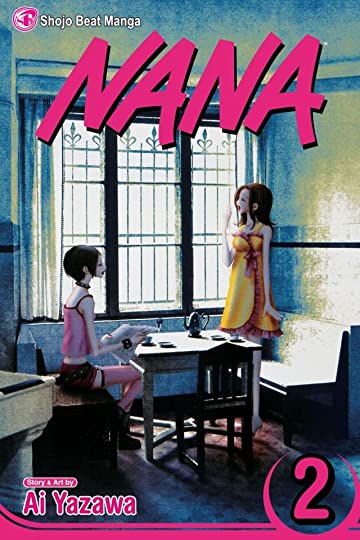
Nana Komatsu was born in a small town which she describes as being neither a small village nor a bustling city. She is a middle child, neither rich nor poor. Entirely ordinary. And her older boyfriend is leaving her for Tokyo. Nana Oosaki doesn’t remember her parents. She was raised by a sarcastic grandmother who worked her hard, and now she is the frontwoman of a punk band called BLAST. And her bassist boyfriend is leaving her for Tokyo.
These two Nanas, when they each reach the age of 20, decide to move to Tokyo, one pursuing big dreams of a name in lights, the other looking for love. They meet on a train and, against all odds, become friends first, then roommates. Nana is a dynamic and sweet slice of life manga, and a masterwork of the shoujo manga space. Essential reading for any fan of shoujo or slice of life manga.
Beastars by Paru Itagaki
Translated by Tomoko Kimura and Annette Roman
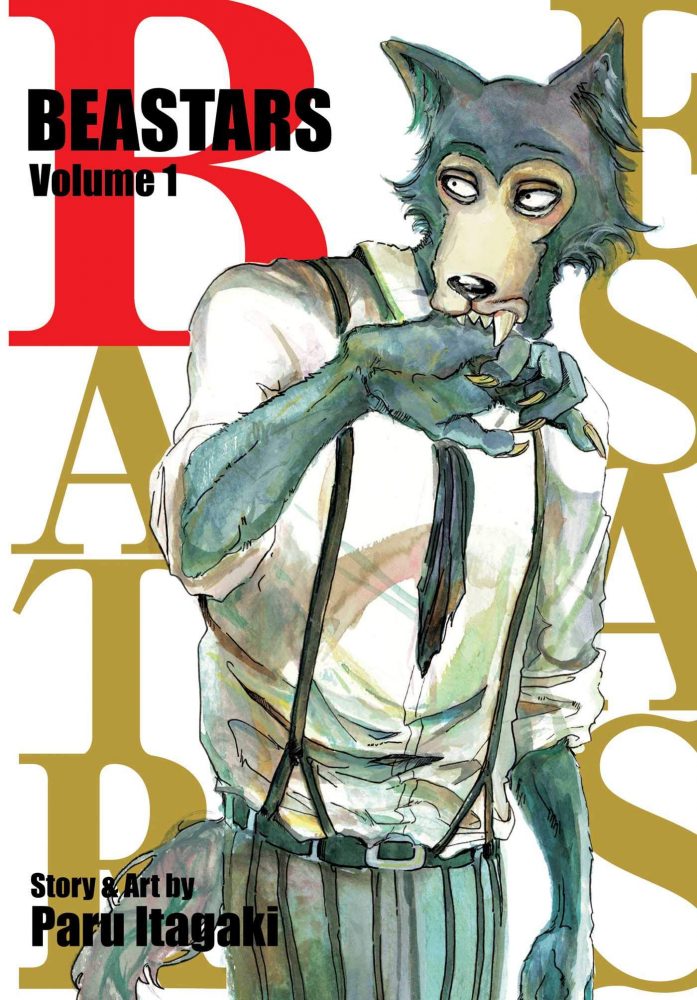
Beastars is set in a fictionalised world populated by anthropomorphised animals. Their genus, size, and diet are all used to develop the world-building of the manga, and also as allegories for real-world social divides between race, class, gender, sexuality, and so on.
The story of this slice of life manga begins at Cherryton Academy, a boarding school attended by a mix of herbivores and carnivores. Beastars has a large and diverse cast of characters, but the manga and anime’s main character is Legoshi, an enormous grey wolf.
Legoshi is a member of Cherryton Academy’s prestigious drama department, though at the start he is part of the crew, not the cast. Chapter One of Beastars opens with Legoshi’s friend and fellow drama club member, Tem the Alpaca, being slaughtered in the drama studio.
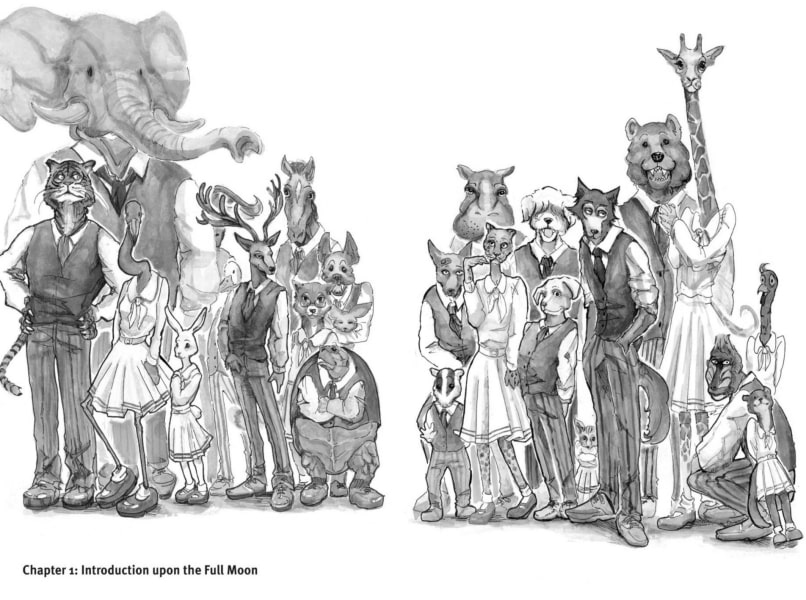
Tem’s death sets in motion a murder mystery, as well as a political ripple effect that will echo through the school and the entire town, as divides between herbivores and carnivores widen. This opening should be reason enough to read Beastars.
This binary between herbivores and carnivores is explored in myriad clever ways as the Beastars manga and anime progress. The binary asks big questions about social roles, the class system, gender roles, biases and prejudices, sexism and racism, and even more besides.
As this slice of life manga escalates, questions about nature and nurture, instinct, fate, and societal pressures and expectations grow larger with the introduction of Haru, a white dwarf rabbit who proves herself to be one of the most complexly written female protagonists in manga.
My Lesbian Experience with Loneliness by Kabi Nagata
Translated by Jocelyne Allen
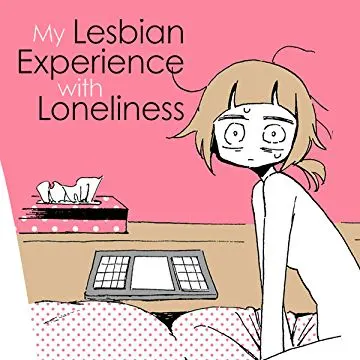
My Lesbian Experience with Loneliness is the story of Kabi, a woman who decided against attending university, and spent her early twenties in a haze of depression, drifting through jobs at stores and bakeries and, when she finds the energy to do so, she writes manga.
She neither avoids nor seeks out friends, companionship, or sex. She simply exists. She begins with one eating disorder, and moves onto another. She loses her job, and finds another. She lives with her parents, and often fails to find the will to leave her bedroom.
Eventually, as we see in the flash-forward opening pages, she arrives, age twenty-eight, at a turning point. She decides to hire a female escort and a room at a love hotel, in order to learn and understand all that she believes she has missed out on in her youth.
Read More: Essential Lesbian Novels
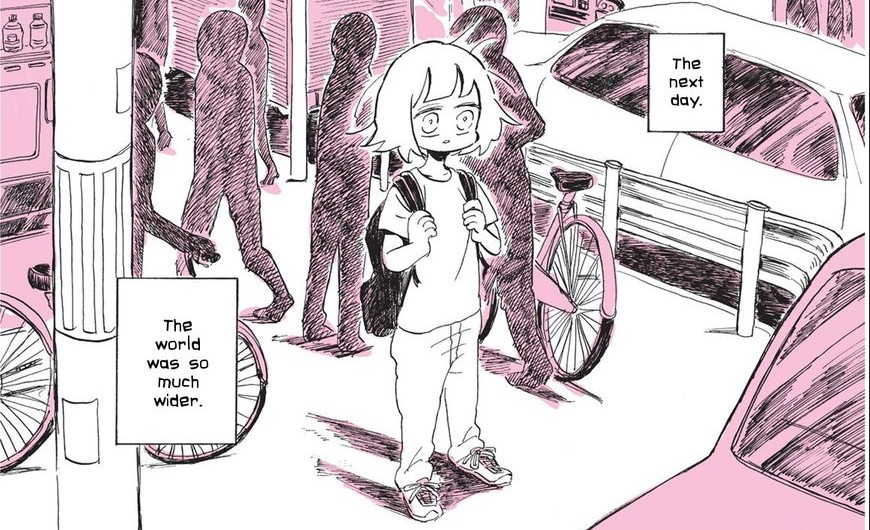
These sexual desires and experiences which she has distorted into fear and anxiety in her mind. This slice of life manga shows us the slice of a life that is still being lived, and as such, has no real beginning or end. It is like a camera being set to record on a random day, and switched off on another. And in that space of time, we get a voyeuristic look at a life of loneliness, fear, and confusion.
Read More: Essential Yuri Manga (Girls’ Love)
Our Dreams at Dusk by Yuhki Kamatani
Translated by Jocelyne Allen

Tasuku Kaname is a gay teenager trying desperately to come to terms with his sexual identity and find peace within it, all the while he is bullied and shunned by his classmates. Slowly, he is introduced to a selection of colourful queer characters who all have their own struggles and their own lessons to teach Kaname.
Our Dreams at Dusk is a gorgeously drawn queer slice of life manga, full of love for the entire queer community. It celebrates the act of love and, specifically, of loving oneself above everything else.
This queer manga explores the dangers of marginalisation and the strength it takes to overcome, find a community, and feel loved. It is very much a story of empathy, love, and community. If you’re interested in learning more about the visual genius of Our Dreams at Dusk, check out this stunning video from Lines in Motion.
Wolf Children by Mamoru Hosoda (story) and Yū (art)
Translated by Jocelyne Allen

Wolf Children is best known as an anime film, written and directed by Mamoru Hosoda, but Hosoda also penned a slice of life manga adaptation of Wolf Children alongside the movie, with illustrations handled by manga artist Yū.
Hosoda’s Wolf Children begins with Hana, a university student in Tokyo who falls in love with a man who soon reveals that he has the power to transform into a wolf. To call him a werewolf would give the wrong impression; he is less cursed and more gifted with the ability to transform at will.
Together, they have two children: Ame and Yuki (rain and snow), but their father dies when they are both very young. Hana finds herself forced to flee the city and find a home for her children in the countryside. She befriends her neighbours, fixes up a dilapidated old house, and does her best raising two children with the ability to transform into wolves.
Wolf Children is a charming heartache of a slice of life manga. It is sometimes quiet and understated but always moving and sweet.
Orange by Ichigo Takano
Translated by Lasse Christian Christiansen and Amber Tamosaitis
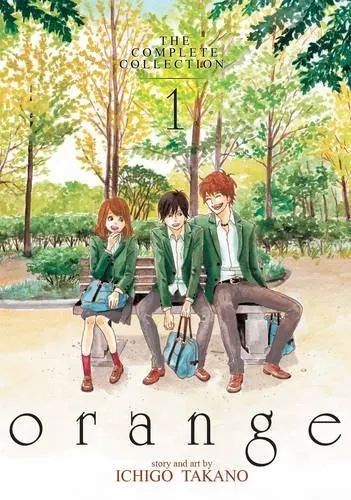
Written and drawn by Ichigo Takano, Orange is a thought-provoking and heartwarming slice of life manga told through the eyes of its main protagonist, Naho, a second year high school student. We also follow the story of Naho’s 27-year-old future self (seen mostly through letters from the future). But while Orange is told through her eyes, it is hardly her story alone.
This beautiful slice of life manga is a story about Naho, her friendships, and the sacrifices she and her friends are willing to make to save a person they all love.
Orange takes place in Matsumoto, a small city in northern Nagano and largely set in the high school that Naho attends with her group of friends – Suwa, Azu, Hagita, and Chino. However, in the very first chapter, we are introduced to a new addition, a transfer student from Tokyo named Kakeru.
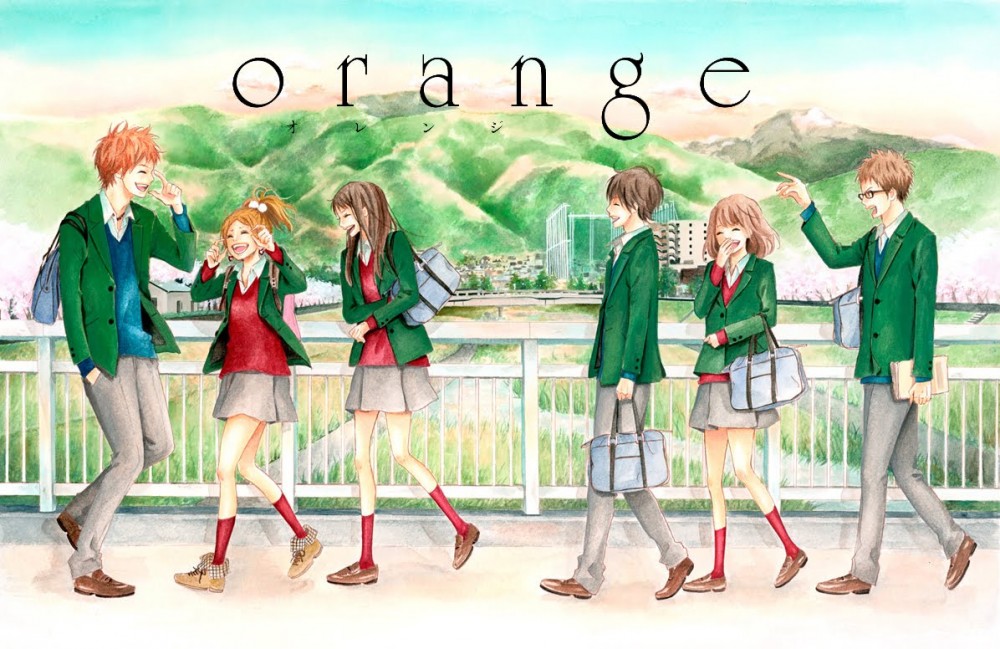
Before we meet Kakeru, the day begins with Naho receiving a letter from someone who claims to be her from ten years in the future. This future self tells Naho that, today, she will meet Kakeru. The letter also includes instructions on how to save Kakeru, something that the Naho of the future failed to do, and has had to live with that regret.
When she gets to school, she does indeed meet Kakeru, and he is quickly assimilated into her group of friends. As the story continues, we learn more about not only Kakeru but every fleshed-out member of this group of highschoolers.
Naho, Kakeru, and the other four are incredibly well-realised characters with quirks, wants, loves, and detailed backgrounds. You’ll come to love each of them in their own way. The story of this slice of life manga, however, toes a line of being wholesome and heartwarming while also exploring difficult themes of mental health and suicide.
Given by Natsuki Kizu
Translated by Junko Goda
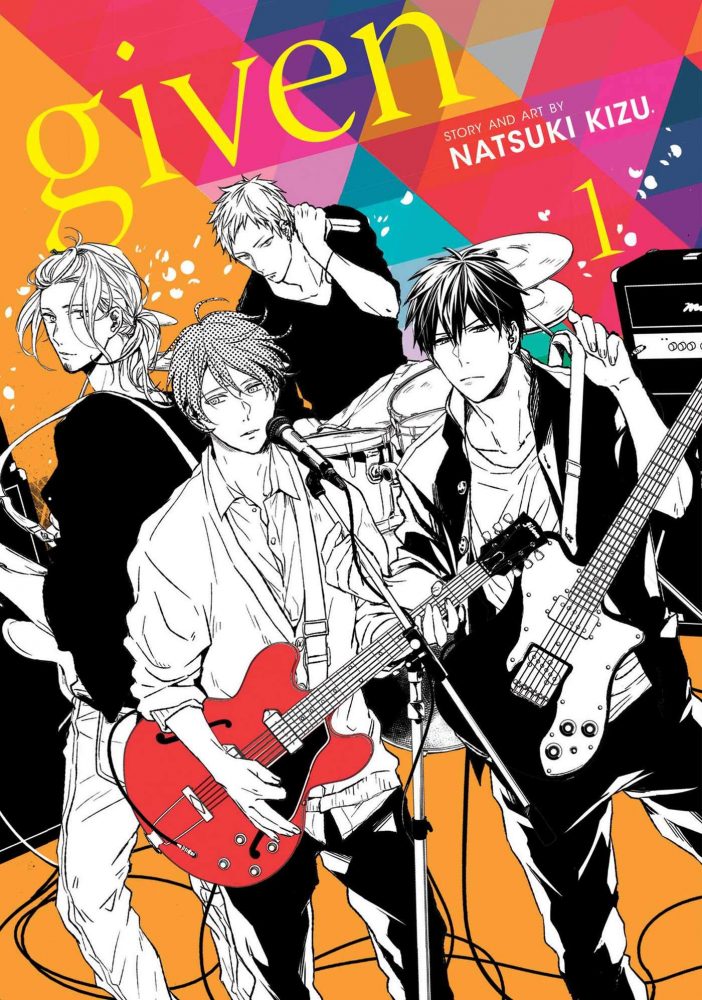
Given is a BL (boys’ love) slice of life manga that has gained quite the following, with an excellent anime and movie as well. The story of this manga really dives head first into what it means to discover your sexuality and deal with the loss of loved ones.
Given is the story of two high school students, Uenoyama and Mafuyu, and two university students, Kaji and Haruki, who are all in love with music. Uenoyama and Mafuyu meet in the stairwell of their school while skipping class. Mafuyu has a mysterious guitar that he can’t play and asks Uenoyama, a music prodigy, to teach him.
At first Uenoyama refuses, but is soon begging Mafuyu to join his band with Haruki and Kaji because of his beautiful yet melancholic vocals. With permission from Haruki and Kaji, Mafuyu joins the band.
However, there is more to Mafuyu than meets the eye. He has experienced a terrible loss that he is unable to put into words. He has a very difficult time voicing how he feels, but has an uncanny awareness of the situations of others. Through the band, Mafuyu finds his voice again and helps the other members deal with their own pasts.
My Brother’s Husband by Gengoroh Tagame
Translated by Anne Ishii
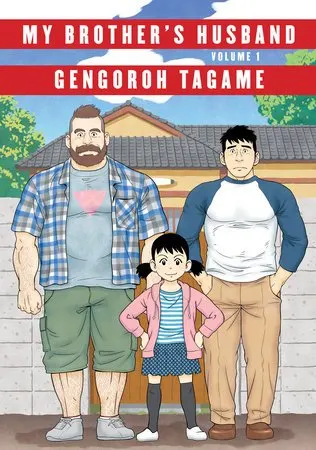
My Brother’s Husband is the story of Yaichi — single father of an adorable young daughter named Kana — and the arrival of the bear-like Canadian, Mike, who has come to share grief and comfort over the loss of his husband, and Yaichi’s twin brother, Ryoji. At the beginning of this queer slice of life manga, all signs point to a tale of acceptance, with Yaichi struggling to handle the presence of a huge gay gaijin in his house.
It is made clear from the start that Yaichi never quite accepted his brother’s sexuality, nor his immigration to Canada. On top of that, the theme of acceptance is hammered home by Kana, a young and infinitely positive child who sees the good in everything. Kana is unburdened enough by social restraints to not understand why two men being married could be anything less than a great (and ordinary) thing.
With the help of his sweet and loving daughter, Yaichi will move past his own prejudices and slowly come to see Mike as a person, accepting him as family and eventually learning to forgive himself for being so cold toward his brother in the years leading up to his leaving Japan.



